Texas A&M-Galveston Celebrates Largest-Ever Cohort of Doctoral Grads
August 7, 2020
Tweet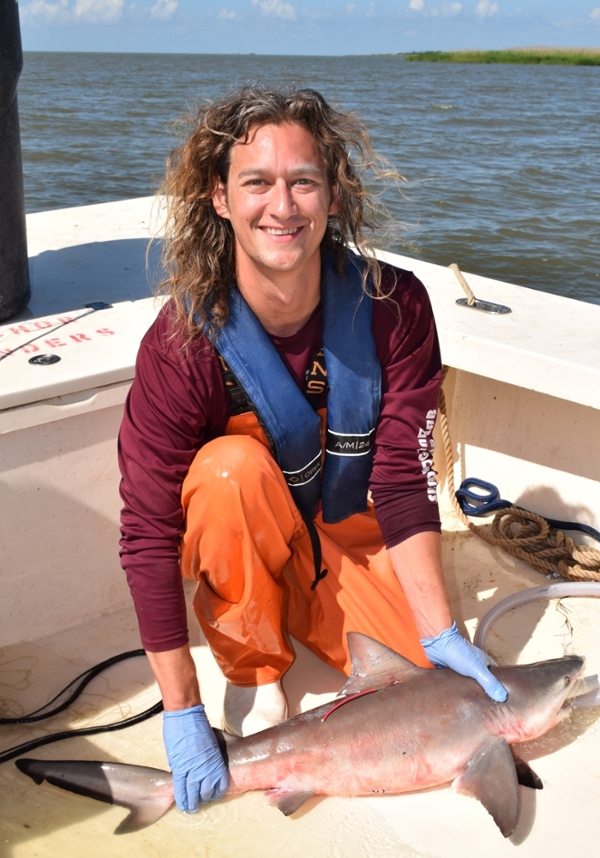
By Andréa Bolt, Communications Specialist, Division of Marketing & Communications
Lionfish, fireworms, bull sharks and salt marshes don’t seem to have much in common other than they play big roles in marine and coastal ecosystems and are the subjects of the dissertations of Texas A&M University at Galveston’s largest-ever class of doctoral students graduating August 8, 2020.
Students Raven Walker-Blakeway ’13, ’16, Janelle Espinoza ’11, '20, Candace Grimes '20, Thomas TinHan '20, and Travis Richards '20 have dedicated countless hours in the lab, on the water, in marshes and fields to write their dissertations and earn their respective Ph.Ds.
Raven Walker-Blakeway has spent her entire academic career at Texas A&M-Galveston, earning a bachelor’s degree in Marine Sciences, a master’s in Marine Biology and now a Ph.D. in Marine Biology.
Under Department of Marine and Coastal Environmental Science Professor Dr. Glenn Jones, Walker-Blakeway researched and published her study, “An Appetite for Lionfish: Empirically evaluating a sustainable fishery through two case studies, Aruba and Texas.”
Walker-Blakeway said lionfish are an invasive marine fish species that have invaded the Western Atlantic Ocean, Caribbean Sea, and Gulf of Mexico. They cause significant damage to the environment through their voracious consumption of native reef fish, rapid expansion and population growth.
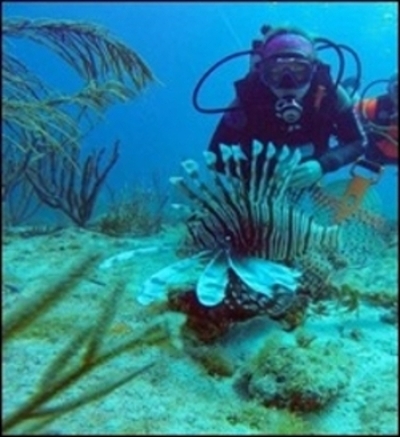
“My research aimed to reverse these adverse impacts of lionfish and humans, by investigating the creation of a commercial fishery that would have societal, ecological and economic benefits to affected regions. Most notably, I developed the idea of managing the lionfish fishery by establishment of an optimum sustainable yield, which prioritizes a fishery yield that balances economic and ecologic interests,” she said.
Walker-Blakeway has recently accepted a full-time Research Specialist position with NOAA's Flower Garden Banks National Marine Sanctuary here in Galveston.
After receiving her bachelor’s in Marine Biology in 2011, Janelle Espinoza has been a doctoral student, lab manager and teaching assistant working for Department of Marine Biology Professor Dr. Jaime Alvarado-Bremer.
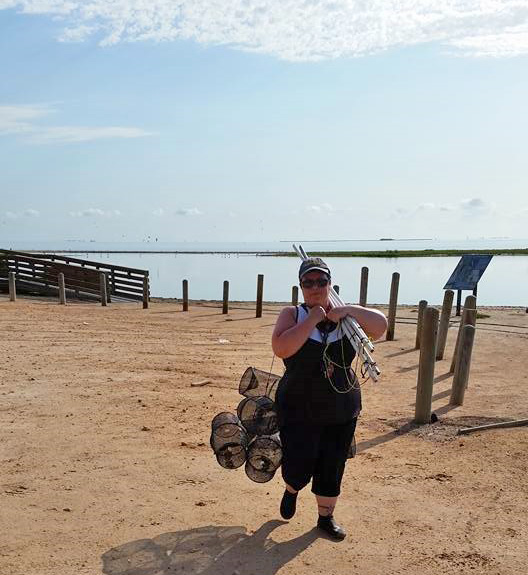
Her dissertation involves the study of salt marsh fauna along the northern Gulf of Mexico.
“I wanted to explore whether current salt marsh restoration practices affect the genetic diversity of fauna that commonly colonize those habitats. I specifically focused on three species: a planthopper, a grass shrimp and the Gulf killifish. I developed a method for using genetics to identify the planthopper species and conducted a comparative genetics study of all three species,” Espinoza explained.
Candace Grimes came to Texas A&M-Galveston under the advisement of Department of Marine Biology Professor Dr. Anja Schulze after earning a bachelor’s in Biology from the University of Oklahoma and a master’s in Marine Biology from Nova Southeastern University in 2016.
In her dissertation, “The Ecology of the Bearded Fireworm, Hermodice carunculata,” Grimes studied bearded fireworms, a species of marine bristleworm, and their relationship to their coral reef homes.
“Bearded fireworms are known predators of reef-building corals and transporters of coral disease so we need to understand more about their ecological role in their natural environments,” she said. “My research investigated how fireworms respond to low oxygen conditions similar to the dead zone that forms at the mouth of the Mississippi River. I also looked into what parts of the fireworm's body contain coral disease pathogens to potentially inform (fishery) managers on best ways to slow coral disease spread in affected areas.”
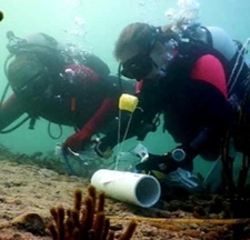
Angling to study bull sharks under the Department of Marine Biology’s Dr. David Wells, Thomas TinHan joined Texas A&M-Galveston by way of the University of Hawaii Manoa and California State University-Long Beach, where he earned his bachelor and master’s degrees, respectively.
TinHan was specifically interested in researching the feeding habits and movement patterns of young bull sharks in Texas bays. His dissertation, “Population connectivity and trophic ecology of juvenile bull sharks in the northwestern Gulf of Mexico,” employed the use of natural and electronic tagging techniques. Another component of this research was to develop a new technique for evaluating the importance of specific Texas bays to bull shark populations.
Travis Richards '20 worked alongside Wells and TinHan, studying the extensive food web and resulting relationships found deep in the waters of the Gulf of Mexico.
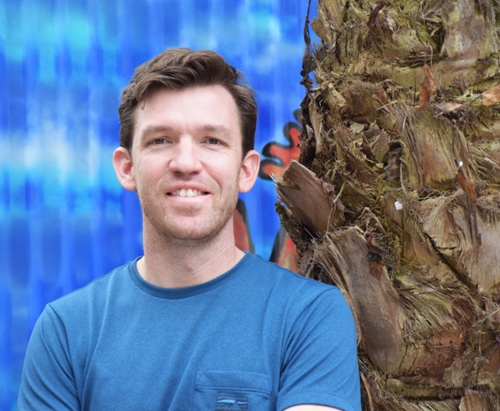
"My research focused on describing the feeding relationships of deep-sea fauna in the Gulf of Mexico. It represents some of the first detailed descriptions of deep-sea food web structure in the gulf and has enhanced our understanding of the gulf's deep-sea ecosystem. Looking forward, I have taken a post-doctoral position with Dr. Wells working on a variety of projects including an age and growth study of blacktip sharks and a tagging study of coastal shark species here in Texas," Richards said.
“We are super proud of our August graduating cohort,” said Senior Associate Vice President for Research and Graduate Studies and Regents Professor for the Department of Marine Biology Dr. Antoinetta Quigg. “Their triumph in this most difficult of times is particularly impressive. We know they will go on to do wonderful things in the future.”
The Marine Biology Interdisciplinary Graduate Program (MARB-IDP) was established in fall 2008 within the Department of Marine Biology on the Galveston Campus in conjunction with the College Station campus and Texas A&M University-Corpus Christi. Currently there are 37 Ph.D. students in the MARB-IDP program at Texas A&M-Galveston.
###
Media contact:Communications Specialist
a_bolt@tamug.edu
More:
Read more about Health & Environment
Read more about Science & Technology
Read more about Marine Biology
Read more about Marine Sciences
Read more about Student Life